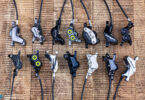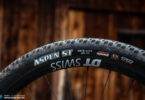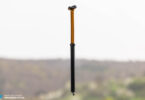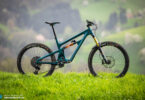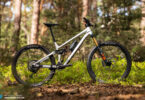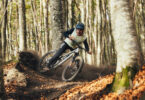Staying fit during winter or in the city, on two wheels, and having fun while you’re at it. Sound impossible? Hardly! We’ll show you how to stay in shape over the winter and how you can improve your riding skills at the same time.
We’ve all been there before: you’re chilling on the couch, just about to switch off as the credits of New World Disorder 10 scroll by, and you’re pumped to get on your bike and do the first backflip of your life. But there are two things stopping you: first, the fact that you just do not have the skills, and second, the fact that snow and mud have made your local trails unrideable. Winter isn’t the only excuse we have for our lack of motivation, though. If it takes you an hour to get to the trails, for example, the city can rob you of any motivation you might have had to get your bike out of the basement or the garage. The solution to the problem is about 200m to 300m long, the finish line is also the start line, and two minutes can tire you out as much two hours on a trail usually would. We’re not talking about the rollercoaster on the village fair. We’re talking about a pump track.

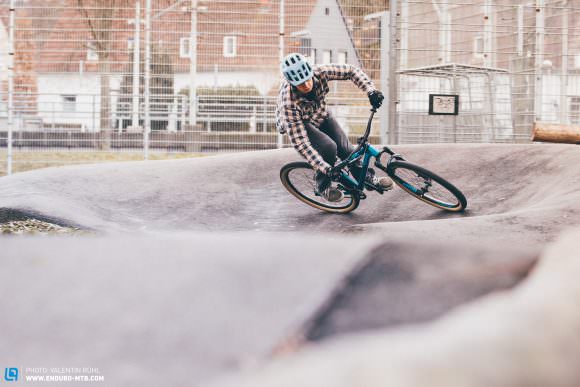
The lure of pumping
What makes a pump track so much better than the gym? It’s the simplicity of it that makes it so appealing. You can improve your endurance, concentration, strength and riding technique in the smallest of spaces and with minimal preparation – and unlike the stuffy gym, it’s a lot of fun too! Regardless of ability, bike and age. The trick to riding a pump track is in the name. Training on a pump track isn’t about building up a sweat while pedalling on the spot; which wouldn’t only look stupid, it would achieve nothing. Instead, it’s about picking up speed by following the contour of the track as efficiently as possible, pulling the bike up over humps and pushing it down the other side of them.

But what if you get bored of riding in circles? Then set yourself a challenge or work on specific riding techniques. Set a lap time and keep on improving it. Try doubling or tripling the humps. Or see how far you can manual, try manualing the whole track. Pump until you can pump no more, or ride as smoothly and consistently as you can.
Manual, pump or jump – the possibilities are limitless!


Improve your riding skills
The best way to improve your riding is to ask yourself: How do I get faster? Where do you have to make the bike light by pulling it up, and where does it make sense to push it down with your body weight? Where would it be quickest to manual through a set of humps, and when are you going fast enough to double or triple them instead? And finally: line choice. Where do you ride to cross an obstacle the quickest? All of these are situations that you can adapt 1:1 on the trail. Be it a compression you manual through, roots you pop off to jump over, or humps in the trail you pump over to gain speed.
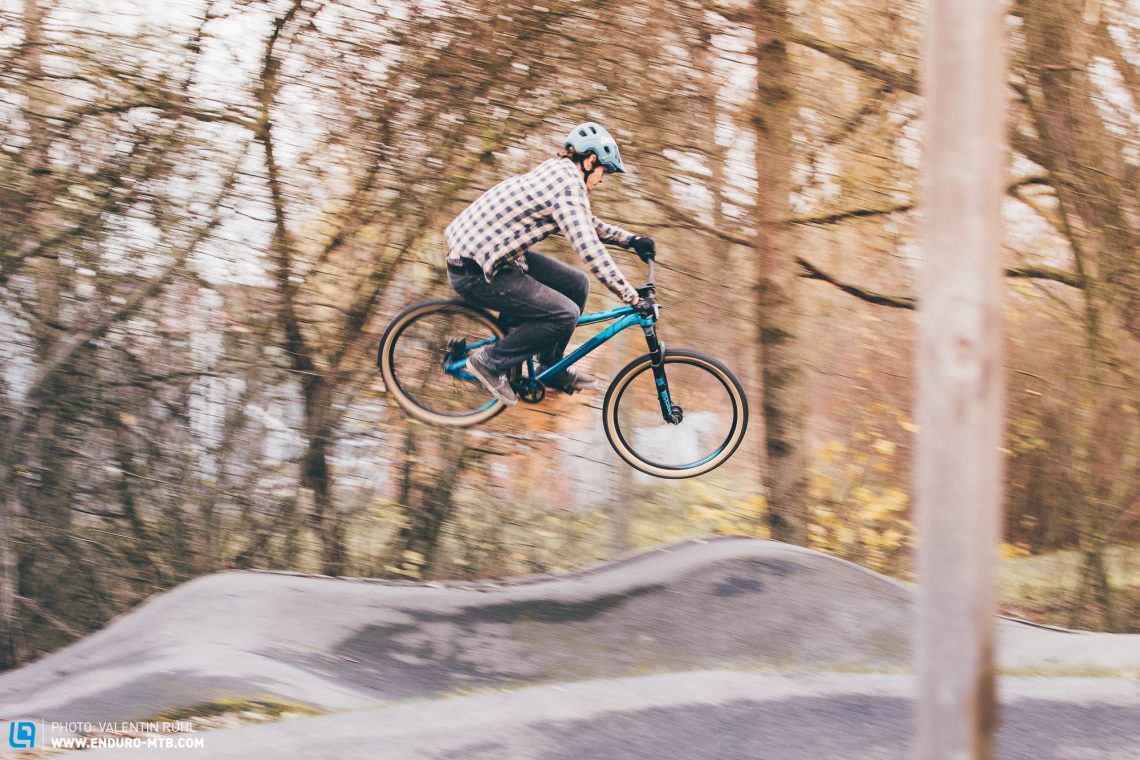
The aim of pump track training should be to improve the interaction of your arms and legs with the bike so that it becomes second nature for then next time you’re out on a real trail. Eventually, you will begin to see obstacles on trails as opportunities to pump over and down, to increase your speed without a single pedal-stroke. If you ride a lot of pump track, you might also start to see obstacles as lips you can pop off of and gap over, and you’re guaranteed to have more fun that way.
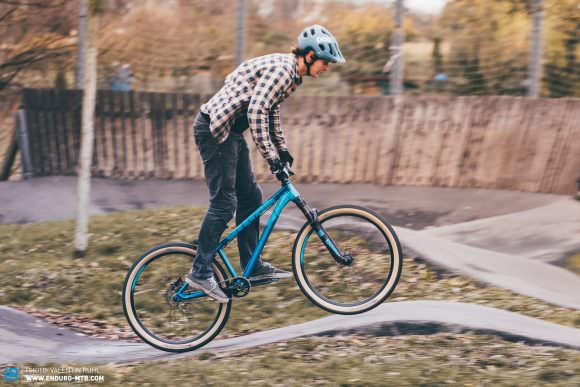
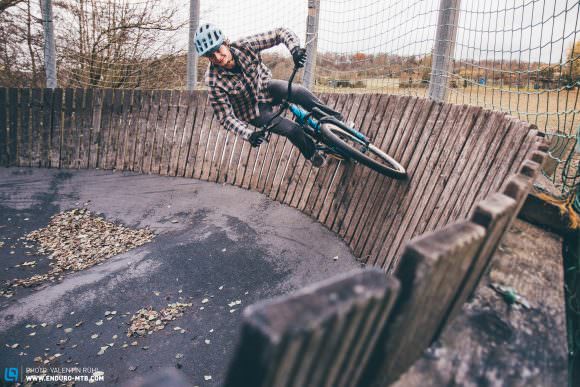
The unwritten rules
How do you behave on a pump track? Above all, be considerate! However tempted you might be to run right over the kiddies on their scooters: don’t. Ultimately, it’s about everyone having fun and having a great time together. Keep to the direction that everyone else is going, or otherwise ask politely if you could have a go in the other direction and make sure everyone else is on the same page, or you’re in for pain. Help others to get better or, if there’s no one in need of help, ride with people that are better and try to keep up. There’s no better way to improve your skills.
Dress code:
Casual! Lycra and clipless pedals are out of place here.

Frequently Asked Questions
Where are the nearest pump tracks?
Ask Google or people you know. Pump tracks can be found almost everywhere.
What do I wear?
Go full hipster! Skinny jeans, a shirt (it looks fast) and sneakers. Lycra and clipless pedals are out of place here.
Where do I start?
Just go for it! Do not pedal, just pump!
Can I use a full-suspension bike on a pump track?
Absolutely! But don’t forget to lock out the suspicion, and inflate the tires a little more as well. The most fun you’ll have on a pump track, however, is always going to be on a jump bike.
What is better: asphalt or dirt?
Asphalt is more versatile and easier to care for since it’s grippier and weatherproof. Dirt is much more pleasant to fall on.

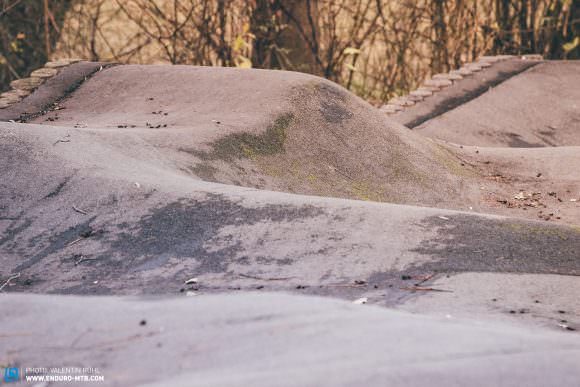
The perfect pump track bike
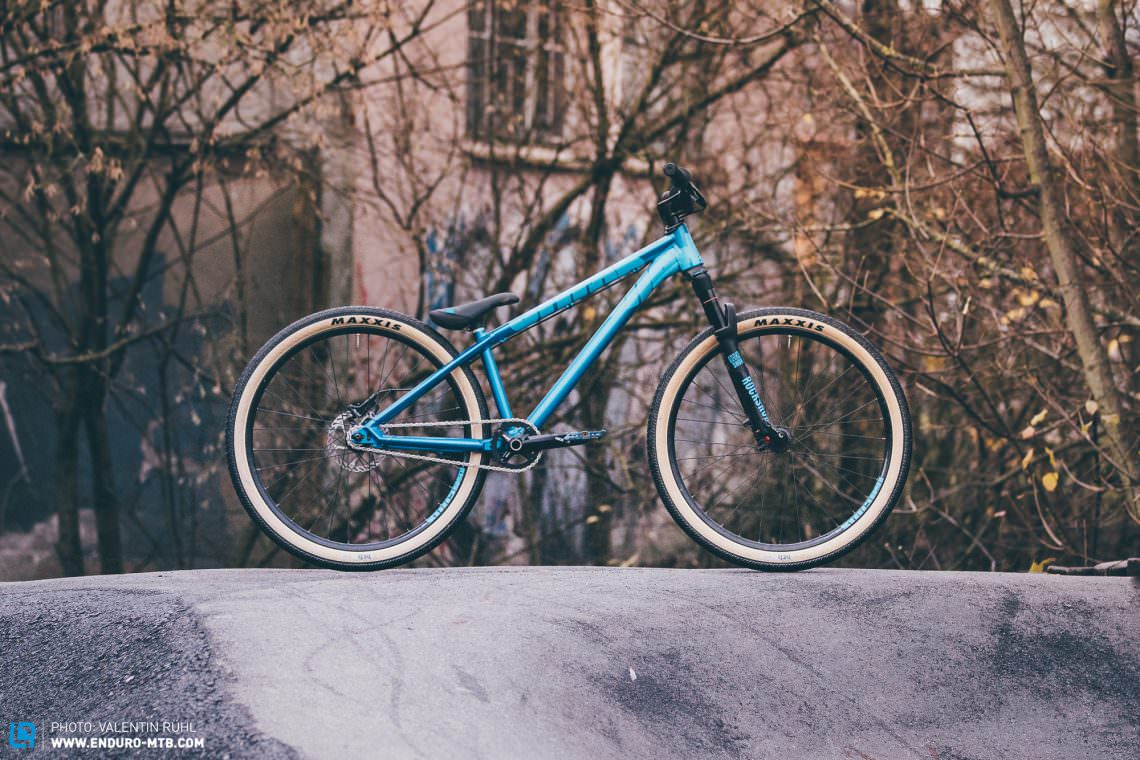
For many, the perfect pump track bike is a back-to-the-roots jump bike, a 100 mm fork and 26″ wheels with semi-slick tires. For us, the Canyon Stitched 360 was brilliant on the pump track. The Avid DB5 on the rear wheel gives you the necessary control for manuals. The MAXXIS DTH Skinwall tires offer plenty of grip on asphalted or loamy pump tracks. The RockShox PIKE DJ is the little sister of the PIKE but was designed for dirt jump/pump track use, which means the stock settings are a lot firmer and more progressive. The Canyon Stitched 360 has everything you need for a perfect pump track session at a fair price of € 999 (about 1 ½ years gym membership).
Bike Canyon Stitched 360 2017
Fork RockShox PIKE DJ 100 mm
Drivetrain Singlespeed
Brakes Avid DB5
Rims/Hubs Alexrims FR 30/Stitched 360
Tires MAXXIS DTH Skinwall
Weight 11.21 kg
Price € 999
Infos canyon.com
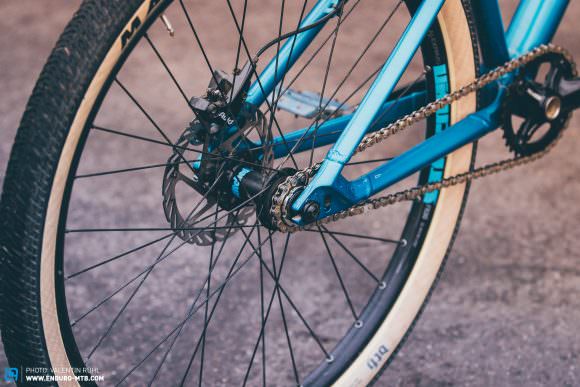
Where there’s no pedalling, you won’t need gears
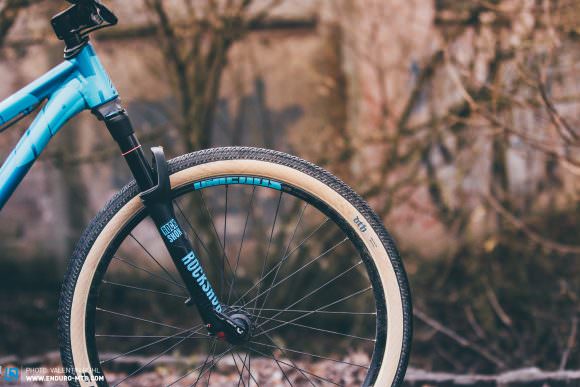
The RockShox PIKE DJ works just as well as it’s big sister, though firmer and more progressive
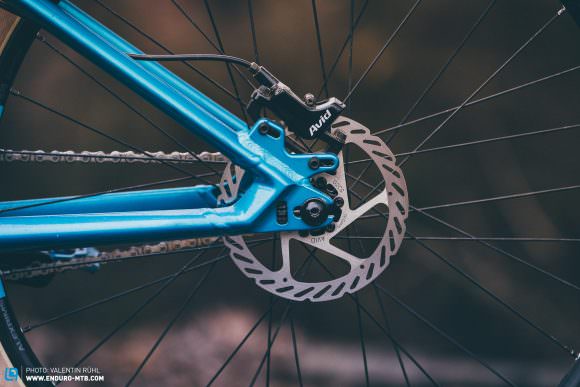
… literally! A brake on the rear wheel makes sense, especially for beginners.
This article is from ENDURO issue #031
ENDURO Mountainbike Magazine is published in a digital app format in both English and German. Download the app for iOS or Android to read all articles on your tablet or smartphone. 100% free!

Did you enjoy this article? If so, we would be stoked if you decide to support us with a monthly contribution. By becoming a supporter of ENDURO, you will help secure a sustainable future for high-quality mountain bike journalism. Click here to learn more.
Words & Photos:






